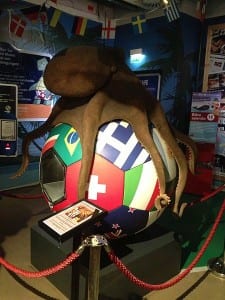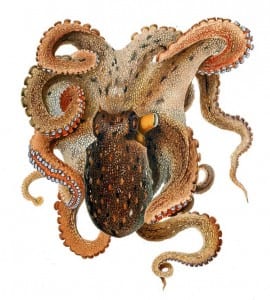Specimen of the Week: Week 164
By Dean W Veall, on 1 December 2014
 Dean Veall here. This may be a very broad generalisation but Welsh, curly haired, zoology trained museum educators have limited knowledge about and skills in playing football, based on a recent survey conducted by me (n=1). This fact enrages and frustrates my four year old nephew as on weekends back in the Valleys when all he wants to do is run around Bargoed Park with a football. It hasn’t always been this way, there was a brief moment back in 2010 when the group that this week’s Specimen of the Week belonged to help me engage with the sport, that is, until it died.
Dean Veall here. This may be a very broad generalisation but Welsh, curly haired, zoology trained museum educators have limited knowledge about and skills in playing football, based on a recent survey conducted by me (n=1). This fact enrages and frustrates my four year old nephew as on weekends back in the Valleys when all he wants to do is run around Bargoed Park with a football. It hasn’t always been this way, there was a brief moment back in 2010 when the group that this week’s Specimen of the Week belonged to help me engage with the sport, that is, until it died.
This week’s Specimen of the Week is:
**The Common Octopus**
(Octopus vulgaris)
1). Common by name
This species of octopus is found across the world and is considered global in it’s range, from the English Channel to Southeast Asia in tropical and temperate waters from near shore shallows to as deep as 200 m. Most places round the coasts then.
2). This is not Paul
Yes that’s right, the animal I was referring to in my introduction was indeed Paul the Octopus, the common octopus who rose to international fame during the 2010 football World Cup for successfully predicting the outcomes of games. This arm is not that of Paul, he resided in a Sea Life Centre in Oberhausen, Germany. Paul was presented with two boxes each bearing a national flag and correctly took the food from the box that ended up winning the game from seven out of seven matches. He even successfully ‘predicted’ that Spain would triumph over the Netherlands in the final. Science has yet to debunk the claims that Paul was indeed an oracle, although they do atrribute it to ‘pure luck’. Paul died (appropriately enough) in October 2010, having lived for nearly three years, a remarkable age for the species who only live for 18 months in the wild. With his death so died my interest in football.

Paul the Octopus memorial statue at Sea Life Oberhausen, Germany. Taken by Christophe95 obtained from http://commons.wikimedia.org
3). Snails, razor clams and squids, oh my!
The common octopus is one of around 100,000 species that belong to the phylum of animals known as the Mollusca. It never fails to amaze me when I read about or see specimens of molluscs in our collection here at the Museum. It is the one case in the whole collection that is the most diverse in appearance, within each shelf there are a multitude of body forms on display (case no. 6, should you visit us). Octopi belong to the class of molluscs known as cephalopods, which include squids, cuttlefish and nautiluses. Curiously, their other relatives included in the larger mollusc group include the bizarre chitins and aplacophorans to the more familiar snails and bivalves. This diverse group are united by having one or all of the following, the radula (a horny toothed ribbon in the mouth), a calcium carbonate shell or other structure covering the upper surface of the body and a mantle, the outer wall or tissue that covers the internal organs or a mantle cavity usually with associated gills. Like other cephalopods, the common octopus has a radula and a mantle cavity.

Illustration of common Octopus taken by Comingio Merculiano in Jatta Giuseppe obtained from http://commons.wikimedia.org
4). Smarter than your aaaaaverage mollusc
Future predicting aside, cephalopods are known for sophisticated levels of intelligence, with it being said that they are the most intelligent of all invertebtrates. They are known to have excellent spatial memory, demonstrating high levels of navigational abilities in their environment. Another attribute of their intelligence is their highly developed behaviours such as the the vampire squid, which hunt schools of fish in groups. Scientists have attributed this active predation as the driving force behind their intelligence. Individuals of species like our common octopus also communicate using their colour changing cells, known as chromatophores, the most extreme case of this is the cuttlefish which exhibits rapid colour change to attract mates and warn off competitors/predators. Because of their high intelligence, the common octopus is the only invertebrate protected by the Animals (Scientific Procedures) Act 1986 in the UK, which protects it’s use in research. In my closing remarks of why we should fear the rise of the cephalopods, they can use tools……
5). Sexy times
This specimen is described in our database as a ‘hectocotylized arm’, which probably explains why it is a single arm with no other parts of the specimen. The hectocotylus arm belongs to a male and is specialised to store and transfer spermatophores to the female during octopi sexy times. During mating, a male will insert his arm into the oviduct of the female and deposit packets of sperm. For the male, he is not long for the world and will die within a couple of months. The female will then store them until she has prepared her den and fertilise between 100,000 and 500,000 of her eggs. Once hatched the young octopi spend 45 to 60 days in the plankton free-swimming with few suckers, simple colour changing cells and nearly completely transparent.
Dean Veall is the Learning and Access Officer at the Grant Museum of Zoology
 Close
Close



